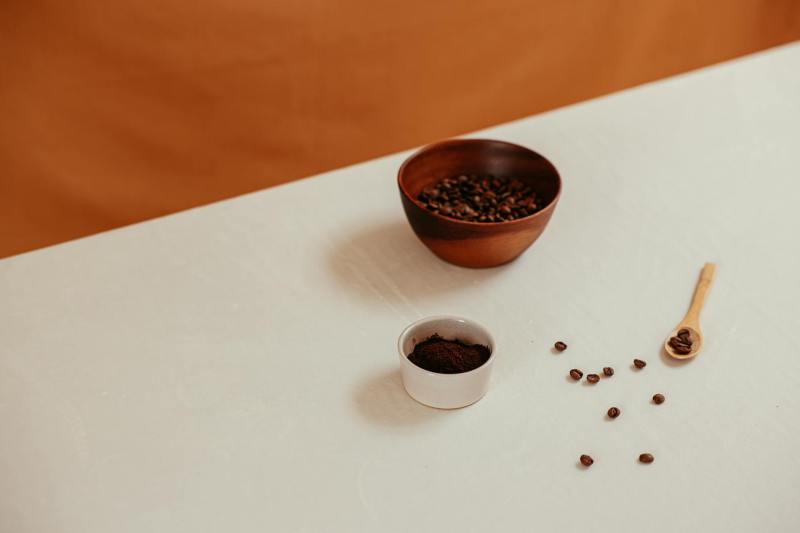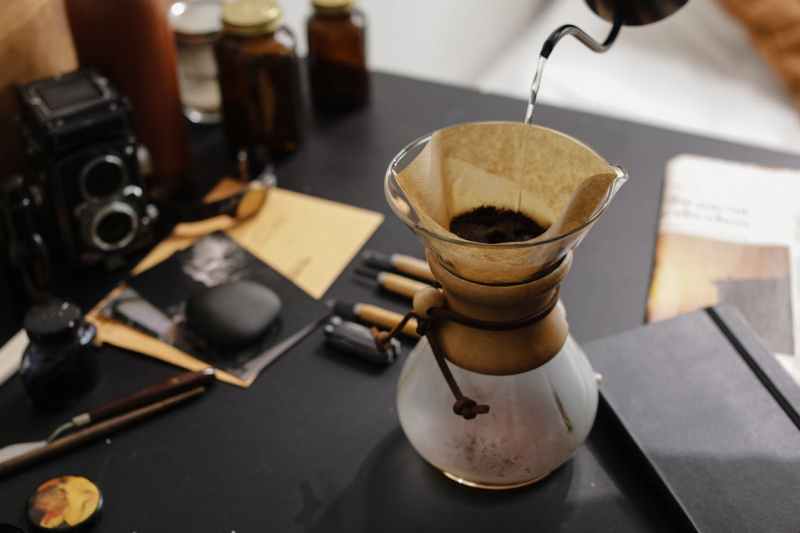If you’ve only ever used a regular drip coffee maker to brew coffee, chances are you may have thought all ground coffee is the same. Regular bags of pre-ground coffee typically have a medium grind size, making them ideal for use in regular coffee makers. Once you start experimenting with different brewing methods, such as pour-over or espresso, you’ll find that each requires a distinct grind size for optimal extraction (I learned this the hard way). For example, brewing coffee with a French Press requires a coarsely ground coffee, whereas an espresso machine requires a finely ground coffee.
If you’re accustomed to using pod-style coffee, such as K-Cups or Nespresso capsules, you may not have given much thought to the various grind sizes of coffee. After all, the coffee is hidden behind a capsule, so you have no idea of its texture. However, matching the type of grind to your brewing method is a must to yield a delicious cup of coffee at home. Below, explore our coffee grind size guide to help you select the best type of coffee for every brewing method.
Coffee grind size guide: Why it matters

Before we dive into the various types of brewing methods, let’s first explore the differences between the available grind sizes on the market. Some brands offer pre-ground coffee in different varieties. You can also choose to grind your whole bean coffee to your desired grind level. Coffee grind sizes can range from extra fine to extra coarse.
Extra-finely ground coffee has almost the consistency of powdered sugar, whereas coarsely ground coffee is more like the texture of coarse sea salt or peppercorns. Between these two extremes are several grind sizes, including fine, medium, and medium-coarse. Each of these has a specific role in certain coffee brewing methods.
Overall, the grind size is essential for optimal extraction from coffee grinds and ensuring you brew the best-tasting cup of coffee. A coffee that is more finely ground has a larger surface area, resulting in a much faster extraction than coarsely ground coffee. As explained by Barista expert Dero, coffee grind sizes refer to the small particles of coffee beans in different sizes, designed to match various brewing methods. Exploring our coffee grind size guide will help you hone in on precisely the correct particle size to use for your preferred brewing method.
Coarse grind

French press brewing involves immersion brewing, where the coffee grounds steep in hot water to produce a rich, bold cup of coffee. Due to the steeping process required, you’ll want to use a coarsely ground coffee with a French Press coffee maker. Using coffee that is too finely ground will result in little particles seeping into your coffee, as particles could pass through the French Press filter. Grind your coffee to a coarse, chunky consistency for best results with this method. Alternatively, you can purchase pre-ground coffee for a French press from a reputable coffee brand, such as Klatch Coffee.
Coarsely ground coffee also works well when making cold brew coffee. The coarse particles help prevent overextraction of coffee during the long steeping process required to make cold brew coffee. If you use the wrong grind size for cold brew, you may end up with a cold brew coffee that tastes way too bitter. Over time as you adjust to your preferred brewing method, you’ll find it a lot easier to know precisely what grind size to use and when.
Medium grind

When brewing coffee with a pour-over coffee maker, use medium-coarse coffee for optimal results. Pour over coffee can be a bit trickier, as every maker is different. Some may work better with a medium-coarse grind that is just slightly finer than coarse, whereas others may need a slightly finer grind. For this method, I recommend experimenting by grinding your beans to different textures until you find a setting that suits you best. For smaller single-serve pour-overs, start with a little finer texture. Automatic drip coffee makers will always use a medium grind coffee.
AeroPress brewing is another coffee brewing method that requires a special grind size. A medium-fine grind is recommended to use with an AeroPress. The same goes for a Moka Pot, which requires using a coffee with the consistency of table salt for optimal extraction. Using the wrong size in these cases can lead to a clogged filter or coffee that tastes too weak or bitter.
Finely ground coffee

Finely ground coffee is used for brewing espresso, due to the short brewing time. As coffee grinds come into contact with water, finely ground coffee pushes the grinds close together, allowing pressurized water to increase the extraction speed. Using a coffee that is too coarsely ground means the water flows through the coffee too quickly to brew espresso. The larger surface area of finely ground coffee for brewing espresso creates a larger surface area, allowing us to brew the perfect shot of espresso.




